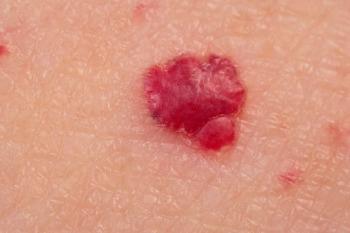Cherry Angiomas
What Is It?
 Red moles or cherry angiomas are common skin growths that can develop on most areas of the body in adults commonly over the age of 30 Years. They typically develop more with age.
Red moles or cherry angiomas are common skin growths that can develop on most areas of the body in adults commonly over the age of 30 Years. They typically develop more with age.
They are also known as Campbell De Morgan Spots or Senile Angiomas. They can vary in size, from the size of a pinhead to the size of a pea and are completely harmless.
Cherry Angiomas are known to be the most common lesions that appear on the human skin, although are unsightly are very easily treated.
They are harmless red spots compromised of clusters of dilated capillaries located on the surface of the skin, forming the red or purple mole called Cherry Angiomas.
They are generally harmless and cause no discomfort.
Cherry Angiomas do not go away on their own, however, there are a number of different, safe & effective treatments that will remove them with no down time and minimal discomfort allowing for a quick and convenient treatment.
What Causes It?
Stress, Aging, Genetics, Chemical Exposure & Sun, may be some of the causes, however, the exact cause and reason for the development of Cherry Angiomas is not fully known yet.
How To Treat?
There can be many reasons you may have developed Cherry Angiomas, but luckily there are a number of different treatments to remove these lesions. Your aesthetician will examine your skin and advise you on the best treatment for you.
A few of these are:
After Care
- Slight reddening and/or swelling of the skin in the area.
- Warmth in the area that has been treated.
- The area treated may feel itchy as it heals.
- A small one may disappear immediately, a medium to large sized one may change colour to grey/beige then fade away over the next week or so. A larger sized one will, during treatment form a scab which must be left to naturally fall away. Further treatment may be required for a larger one.
Following treatment ensure you follow this aftercare advice to avoid unwanted reactions or infections:
- A scab may appear to seal the skin and prevent infection. The scab must not be picked off, as to do so will result in scarring.
- Do not touch, scratch or rub the treated area.
- Apply aftercare lotion regularly, with clean fresh cotton woo, until the area has completely healed.
- Aftercare products recommended use is: Sterex Witch Hazel Gel for 24-48 hours, followed by 28 days of the Sterex Aloe Vera Gel. Apply twice a day or as often as required and under usual day/night cream. Apres Clear can be substituted for the Witch Hazel Gel and offers additional anti bacterial properties.
- The treatment area can be washed or cleansed, using a gentle soap free/perfume free cleanser. Gently pat the area dry to avoid dislodging any scabs.
- No swimming, saunas, steam rooms, facial steaming, facial scrubs and other beauty treatments, until the area has completely healed.
- Please keep out of U.V light as much as possible. The area treated and any areas showing a predisposition should be protected by sunscreen at all times particularly in the summer months.
- Avoid using and possible skin sensitizers or irritants such as perfumes, fake tan products or perfumed body lotions.
- Should you have any concerns about your treatment please contact the Clinic.